![]()
This page is also available in French
![]()
The Salle Favart, located in rue Favart, and the company of the Opéra-Comique had initially separate histories that eventually came together in 1840. The Salle Favart went through no less than three successive versions in its long history. The first Salle Favart, built in 1781-1783 to house the Comédie Italienne, was inaugurated in 1783. It was later renamed Théâtre Royal Italien (or Théâtre Italien for short). It was burnt down in 1838, but immediately rebuilt and opened again in 1840 (second Salle Favart). Destroyed again by fire in 1887, the theatre was rebuilt again between 1894-1898, but on a different plan from its predecessor (third Salle Favart, still extant).
The company of the Opéra-Comique, for its part, had been housed at first in the Salle Feydeau from 1801 to 1829. The Salle Feydeau, located in rue Feydeau some 200 yards away from Salle Favart, was built in 1789 but disappeared in 1833 with the construction of the Rue de la Bourse. The Opéra-Comique left Salle Feydeau in 1829 even before its disappearance, moved for a brief period (1829-1832) to Salle Ventadour, then for a few years to the Théâtre des Nouveautés. It settled finally in the newly rebuilt Salle Favart in 1840, which became its permanent home. After this time the Opéra-Comique and Salle Favart were in practice synonymous, just as Salle Ventadour became synonymous with the Théâtre Italien from 1841 onwards.
As a music critic Berlioz had frequent occasions to visit the Opéra-Comique and the Salle Favart, and many of his feuilletons in the Journal des Débats and elsewhere reviewed performances and productions there. On the occasion of the construction of the new (second) Salle Favart after its destruction by fire in 1838, Berlioz gave a detailed description of the hall and its characteristics (Journal des Débats 21 May 1840). The hall itself was elegant and luxurious, and pleasant as a venue from the point of view of the audience. Berlioz judged that its acoustic was good, except that the orchestra pit was rather low in relation to the stage, hence the orchestra, though adequate so long as it was only performing an accompanying role for the singers on stage, lacked power and brilliance whenever it had to come into its own.
In spite of these reservations, Berlioz did make use of Salle Favart as a concert venue; the reason for this is that after 1843 the hall of the Conservatoire, which Berlioz had frequently used until then for his concerts, and which was by far the best concert hall in Paris, was closed to him by a hostile ‘coterie of the Conservatoire’ (Mémoires ch. 59). He first made use of Salle Favart for a concert on 6 April 1844, which included works of his as well as music by other composers. Two years later he was forced to resort again to Salle Favart, this time for the first performance of one of his major works, la Damnation de Faust, which he had started composing during his travels in Germany and central Europe in 1845-46 and completed on his return to France. But the first performance, on 6 December 1846, took place before a half-empty audience; a second performance on 20 December was no more successful, and a projected third performance never took place. In spite of favourable reviews this was one of the worst setbacks in Berlioz’s career; it left him heavily in debt and incited him to travel to Russia early the following year to recoup his fortunes (Mémoires chapter 54).
The trip to Russia was brilliantly successful and financially lucrative, but could not erase the shock of the failure of la Damnation in Paris: ‘Nothing in my artistic career hurt me more deeply than this unexpected indifference. It was a painful discovery […], and from then on I have not gambled even twenty francs on the popularity of my music with the Parisian public’ (Mémoires chapter 54). La Damnation de Faust was never again performed complete in Paris in the composer’s lifetime. But ironically it was to become the most popular of his works in Paris, but only after his death: performances of the complete work conducted by Édouard Colonne in 1877 created a sensation, and thereafter for decades to come the work was performed repeatedly year after year to enthusiastic audiences.
Despite his unhappy experiences with Salle Favart and la Damnation de Faust in 1846, Berlioz used the hall again on two occasions several years later, both of which included complete performances of L’Enfance du Christ. The first was on 7 April 1855, and according to Berlioz himself was highly successful (CG no. 1933). The second was on 23 April 1859 and Berlioz judged it to be the best performance of the work so far (CG nos. 2368, 2371).
![]()
Unless otherwise specified, all the photographs reproduced on this page were taken by Michel Austin; the other pictures have been scanned from engravings in our own collection. © Monir Tayeb and Michel Austin. All rights of reproduction reserved.
The first three pictures show the first and the second Salle Favart which Berlioz knew. The next four photos show the Salle Favart in its present (third) state. The last two show the Salle Feydeau.
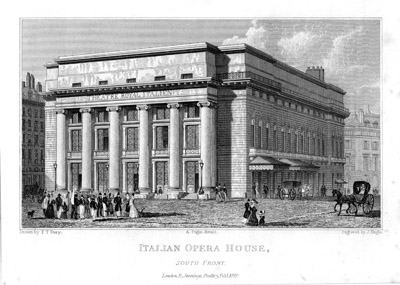
This engraving is in our own collection.
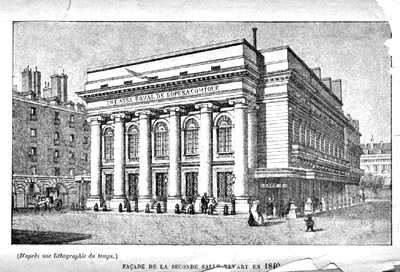
We are most grateful to our friend Gene Halaburt who sent us the above picture.
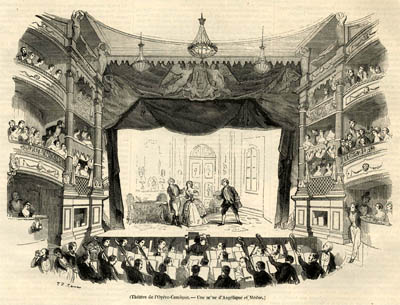
The above engraving was published in L’Illustration of 10 June 1843, a copy of which is in our collection.
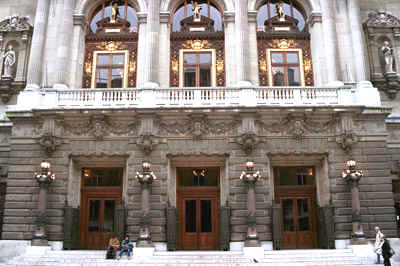


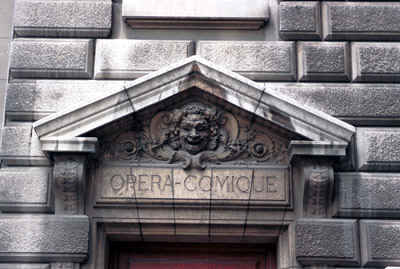
Salle Feydeau did have a connection with Berlioz’s music: on 25 February 1829 his overture Waverley was performed there.
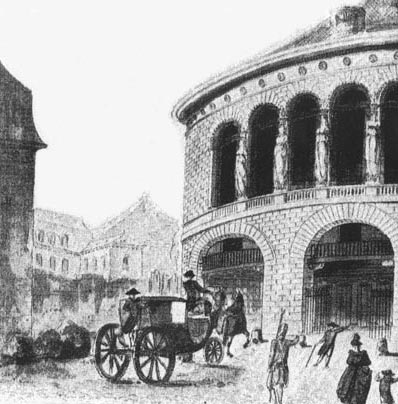
We are most grateful to M. Laurent Ludart who sent us the above picture.
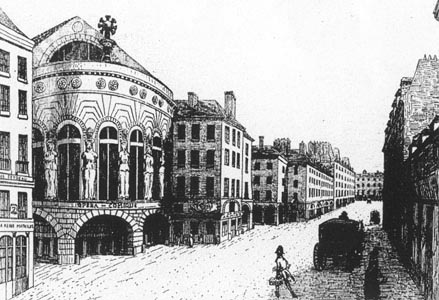
We are most grateful to M. Laurent Ludart who sent us the above picture.
![]()
© (unless otherwise stated) Monir Tayeb and Michel Austin for all the pictures and information on this page.
Copyright notice: The texts, photos, images and musical scores on all pages of this site are covered by UK Law and International Law. All rights of publication or reproduction of this material in any form, including Web page use, are reserved. Their use without our explicit permission is illegal.